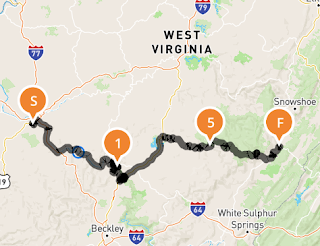Plug In West Michigan Podcast - Episode 6 - Home Charging
Part of WKTV Journal Grand Rapids, MI Community Programming
Listen Here: Plug-In West Michigan Podcast
Episode 6 Show Notes
Introduction
- Host: Karl Bloss
- Blog: www.muskegonevguy.com
- Instagram @muskegonevguy
- West Michigan EV community: www.facebook.com/groups/WestMichiganEV/
- Guest: Kraig Schultz, Schultz Engineering
- Theme song composed by Tyler Burke
- Home vs. public charging
- Fundamentally, most charging will take place at home if you have a garage or driveway where you have access to power. Home charging is even more convenient than pumping gas; just plug in and you have a full "tank" in the morning.
- When you have an EV, most days you start off with a 80-100%, go about your day and plug in again at night. This is not much different from your cell phone.
- Public charging will be the exception for most drivers.
- MuskegonEVGuy Blog Essay: Home Charging Basics
- How power gets in the car - the charging system components:
- Charging circuit
- EVSE
- Onboard charger
- Battery
- The charging speed depends on the weakest link of the charging circuit, the EVSE, and the onboard charger.
- Details are covered in the Home Charging Basics Essay.
- Power in Watts = Volts X Amps (approximately for AC circuits, but pretty darn close)
- A 110V 15A circuit will deliver a maximum of 1,650 Watts or 1.65 kilowatts (KW)
- A 220V 50A circuit will deliver a maximum of 11,000 Watts or 11 KW
- If your car’s onboard charger can only handle 6.6 KW, but your 220 V 16A EVSE can only pass about 3.5 KW, then 3.5 KW is the maximum charging power.
- What all this boils down to is that Level 1 (110V) charging typically adds 3-4 miles of range per hour of charge and Level 2 (220V) charging typically adds 15-30 miles of range per hour of charge depending on the charging system component capacities.
- Energy in kWh is how much the battery of an EV can hold.
- A circuit charging at 3.5 KW can charge 35 kilowatt-hours (kWh) of energy in 10 hours (assuming 100% efficiency)
- A battery's energy content along with the efficiency (miles per kWh) determines the range.
- Myth - you need expensive equipment
- Depending on your driving needs, the 110V EVSE that came with your car and a regular 15A outlet might be all you need to give you 30 miles of range overnight.
- EVSEs are no longer necessarily high cost
- I mentioned on the last show about picking up a used ClipperCreek 32A/7KW unit for around $200. 16A/3.5 KW units are now consistently less than $200 and often around $150.
- Optional EVSE functionality
- Remote monitoring of charging activity
- Reporting
- Charge timers
- Ability to charge at specific times like at off-peak rates or during solar generation
- Consumers Energy Rate Plans
- Ability to limit charge - Blog essay: Electric Vehicle Home Charging - Charging to 80%
- Our recommendation:
- Install NEMA 14-50 circuit and a plug-in EVSE
- All costs are rough estimates. Please get an estimate from a licensed electrician for actual quotes.
- 50A circuit breaker, $25
- 6 gauge wire; $1.00 - $1.50 per foot
- NEMA 14-50 receptacle. $15
- Labor
- Details are covered in the Home Charging Basics Essay
- The Tesla Model 3 has recently received an over-the-air software update that allows it to use the CHAdeMO adapter. https://cleantechnica.com/2019/07/09/tesla-finally-adds-model-3-support-to-its-chademo-adapter/
- It’s possible to rent a CHAdeMO adapter if you only occasionally need one from QuickChargePower.com - link: https://shop.quickchargepower.com/Rentals-and-Services_c2.htm
- The Level 2 public charger in downtown Muskegon is broken and has been shut off pending repairs. https://www.plugshare.com/location/159078
- The Level 2 charger at the GVSU Innovation Center is still operational. https://www.plugshare.com/location/1471
- There’s a YouTube Channel I’ve started following called EV Revolution hosted by Kenneth Bokor out of Ontario. Kenneth has some great detailed reviews of recent EVs such as the Nissan LEAF Plus and most recently the Kia e-Niro. What I like about Kenneth’s reviews is that he goes into some pretty detailed analysis of the pros and cons of recent EVs, but is very down to earth and practical.
- My other favorite EV-related YouTube Channels are:
- Fully Charged - https://www.youtube.com/user/fullychargedshow
- Transport Evolved - https://www.youtube.com/transportevolved
- EV Home Charging Basics - https://www.muskegonevguy.com/2018/10/electric-vehicle-home-charging-basics.html
- Charging your EV battery to 80% - https://www.muskegonevguy.com/2019/01/electric-vehicle-home-charging-charging.html
- Find public EV chargers - https://www.plugshare.com/
- West Michigan EV groups:
- West Michigan EV and Plug-In Vehicle Enthusiasts: www.facebook.com/groups/WestMichiganEV/
- Kalamazoo Electric Vehicle Association - https://www.facebook.com/KalamazooEVA/
- Tesla Grand Rapids - https://www.facebook.com/teslagrandrapids/
- Follow me on Instagram: @muskegonevguy




Comments
Post a Comment
Feedback including suggestions or constructive criticism is welcome. Please note that abusive or offensive comments may be removed.